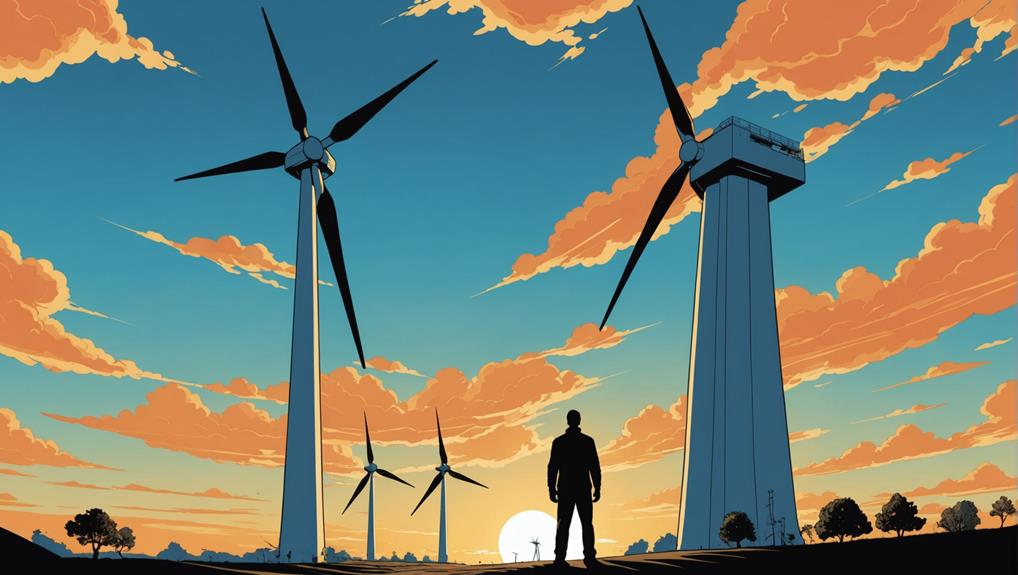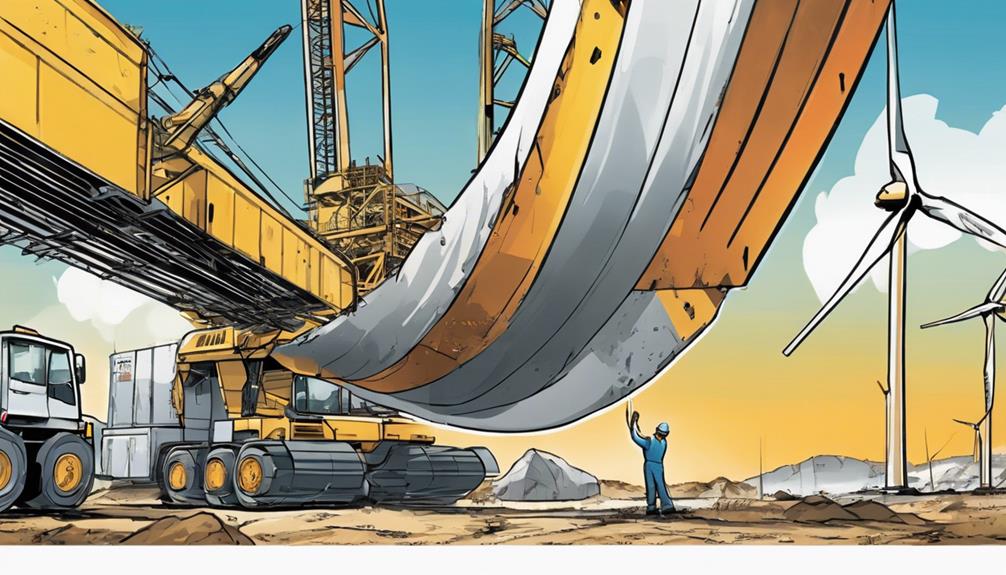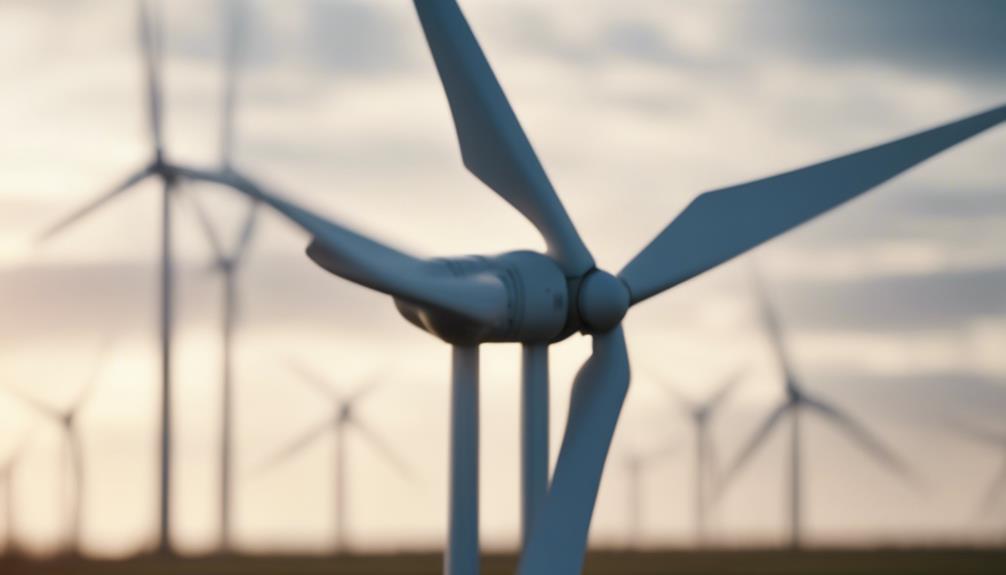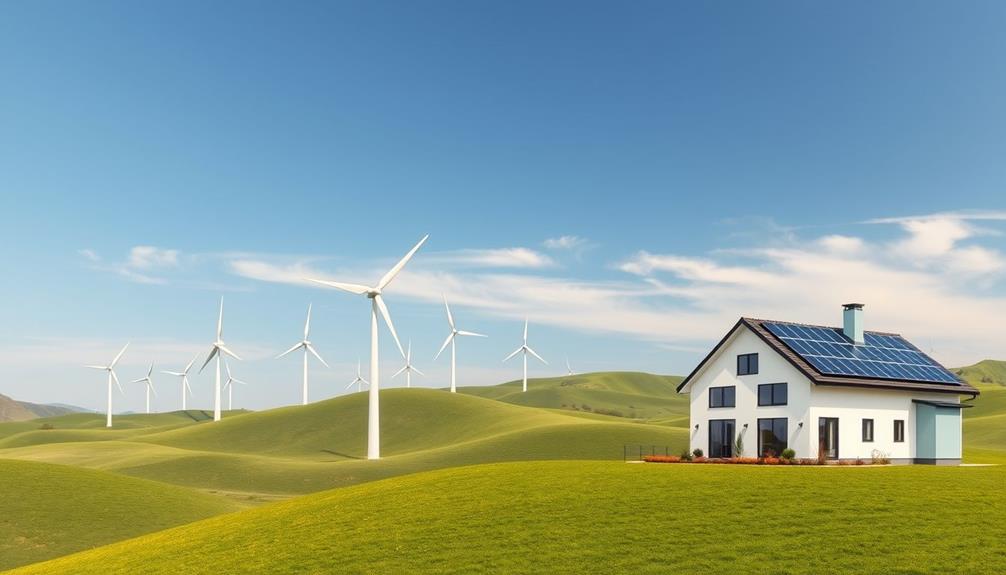When looking at wind turbines compared to humans, the massive size, technological advances, and energy production might surprise you. They reach new heights—around 98 meters on land and 150 meters offshore, with rotor diameters exceeding 130 meters. The capacity is booming too, hitting 3.2 megawatts in 2022, showing a 350% leap since 1998-1999. Transporting and installing them isn't a breeze, needing special gear and precision. Firms are creating smart solutions to tackle these challenges. Plus, innovations like slender blades and on-site tower building are revolutionizing the industry, aiming for more efficient and powerful wind energy harnessing.
Key Takeaways
- Wind turbines can reach over 150 meters in height, surpassing the average human height by a significant margin.
- The rotor diameter of wind turbines can exceed 130 meters, showcasing their immense scale compared to humans.
- Wind turbines have an average capacity of 3.2 megawatts, far surpassing human power output capabilities.
- Wind turbines harness high wind speeds at elevated hub heights, maximizing energy production beyond human capabilities.
- The advancements in wind turbine technology aim to optimize efficiency and power generation, illustrating their superiority over human energy conversion.
Hub Height Growth
With a 73% increase in hub height since 1998-1999, utility-scale land-based wind turbines have reached around 98 meters (~322 feet) in 2022. This growth in hub height is a significant development in energy technologies, especially in the United States, where wind power plays a vital role in renewable energy production. By elevating turbines closer to the higher wind speeds found at greater heights above the Earth's surface, these taller structures can harness more energy efficiently.
Particularly, regions with substantial wind shear, like the Midwest and Northeast, have embraced these taller wind turbines with heights exceeding 100 meters. This shift towards taller hub heights reflects the continuous advancements in wind turbine technology aimed at maximizing energy production and making wind power a more competitive and sustainable energy source.
As wind turbines tower higher above the ground, they're better positioned to capitalize on the enhanced wind resources available at elevated levels, further solidifying their significance in the renewable energy landscape.
Offshore Wind Heights
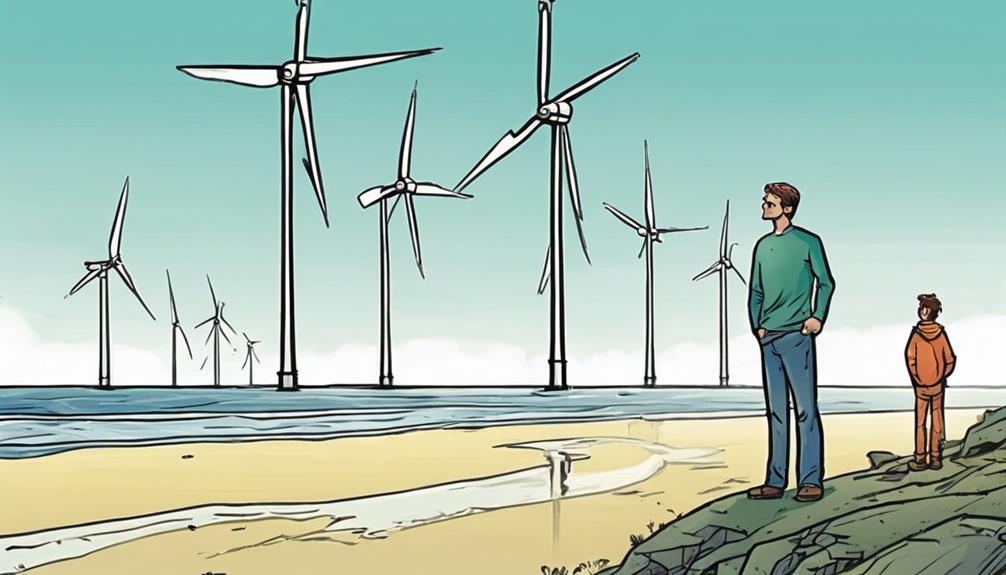
You're about to learn how offshore wind turbine heights are on the rise, with projections showing them reaching about 150 meters (500 feet) by 2035.
These taller structures are designed to harness stronger and more consistent winds at sea, ultimately boosting energy production.
As technology advances, taller offshore wind turbines with larger rotor diameters are enhancing the efficiency of energy capture, making offshore wind farms a key player in expanding renewable energy capacity.
Tower Height Growth
Offshore wind turbine tower heights in the U.S. are projected to increase substantially from 100 meters in 2016 to approximately 150 meters by 2035. The push for taller offshore wind turbine towers is driven by the need to harness stronger and more consistent winds found at higher altitudes, leading to enhanced energy production efficiency and cost-effectiveness.
Additionally, the growth in tower heights enables the exploration of wind energy potential in deeper waters, expanding the scope of offshore wind farm locations. This upward trend in offshore wind turbine tower heights signifies the continuous advancements in technology and engineering, indicating a shift towards maximizing wind power generation capabilities at sea.
Turbine Size Comparison
The increasing tower heights of offshore wind turbines in the U.S. are directly correlated with the growing size comparison of these turbines, reflecting advancements in technology and the drive to maximize wind energy efficiency at sea.
By 2035, offshore wind turbines are projected to soar to about 150 meters (500 feet) in height, up from 100 meters (330 feet) in 2016. Taller offshore turbines are designed to harness stronger and more consistent winds found at higher altitudes, allowing for increased energy production.
The rise in turbine heights also facilitates the installation of larger rotor diameters, further enhancing energy generation capabilities. This shift towards larger offshore wind turbines signifies a technological evolution aimed at efficiently capturing wind energy resources.
As these structures continue to reach new heights, they're poised to play a pivotal role in meeting renewable energy goals and reducing carbon emissions in the future.
Offshore Energy Potential
Harnessing the power of offshore wind energy involves optimizing the height of wind turbines to capture stronger and more consistent winds at sea. Offshore wind turbines in the U.S. are projected to reach heights of approximately 150 meters (500 feet) by 2035, up from about 100 meters (330 feet) in 2016.
These taller structures are designed to maximize energy production by tapping into the more potent and reliable winds found at higher altitudes over the ocean. This push for increased turbine heights reflects the industry's commitment to enhancing energy efficiency and capacity to meet the escalating demands for electricity.
The construction of taller wind turbine towers in offshore locations signifies a strategic move to leverage the superior wind conditions available at sea. The advancement in offshore wind turbine heights not only showcases technological and engineering progress but also highlights the industry's dedication to accessing the substantial energy potential harbored by offshore wind resources.
Rotor Diameter Expansion
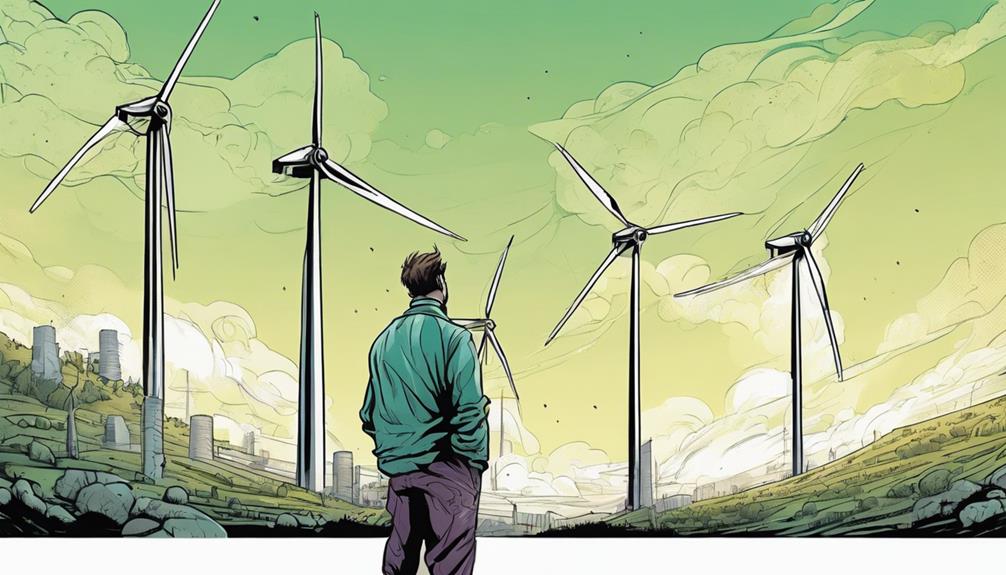
Expanding rotor diameters in wind turbines greatly boosts energy capture efficiency and output. With the average rotor diameter of newly-installed U.S. wind turbines surpassing 130 meters (~430 feet) in 2022, these turbines can efficiently harness more wind energy.
The significant increase in rotor swept areas by approximately 645% since 1998-1999 has enabled turbines to cover a larger area, resulting in enhanced electricity generation. Larger rotor diameters also allow turbines to capture wind at lower speeds, opening up possibilities for wind energy development in a variety of locations.
This expansion not only contributes to amplifying the energy output of wind turbines but also improves their overall productivity and cost-effectiveness. The trend towards larger and more efficient turbines in the wind industry underscores the focus on maximizing energy generation potential.
Increasing Nameplate Capacities

You've likely noticed the trend of increasing nameplate capacities in wind turbines. This growth trend not only signifies advancements in technology but also has a significant impact on turbine efficiency.
Understanding how these higher capacities influence energy production and cost savings is essential in grasping the scale and power of modern wind turbines.
Capacity Growth Trend
Amidst the evolving landscape of wind energy technology, the trend of increasing nameplate capacities of wind turbines has been steadily gaining momentum. The average capacity of newly installed U.S. wind turbines in 2022 reached 3.2 megawatts (MW), showcasing a 7% increase from the previous year and an impressive 350% surge since 1998-1999. This rise in capacity means that fewer turbines are required to generate the same amount of energy, resulting in cost savings and enhanced efficiency in energy production.
Notably, turbines within the 2.75-3.5 MW range experienced a surge in deployment in 2021-2022, indicating a clear shift towards larger and more potent turbines. Moreover, there was a noticeable uptick in the proportion of turbines boasting a capacity of 3.5 MW or higher during the same period, underlining the industry's inclination towards higher capacity models.
These advancements in turbine capacities signify significant progress in technology and design, enabling increased energy generation with a reduced number of turbines.
Turbine Efficiency Impact
With increasing nameplate capacities of wind turbines, the efficiency of energy generation has greatly improved, leading to cost savings and enhanced productivity in the industry.
The average capacity of newly installed U.S. wind turbines in 2022 reached 3.2 megawatts, a substantial 350% increase since 1998-1999. This growth in capacity translates to greater efficiency, as higher capacity turbines require fewer units to generate the same amount of energy, ultimately reducing overall costs and land usage.
Importantly, there's been a trend towards installing turbines in the 2.75-3.5 MW range, with an increasing proportion of turbines at 3.5 MW or larger. These shifts towards more powerful turbines highlight the industry's focus on enhancing efficiency and productivity.
Tower Transportation Challenges
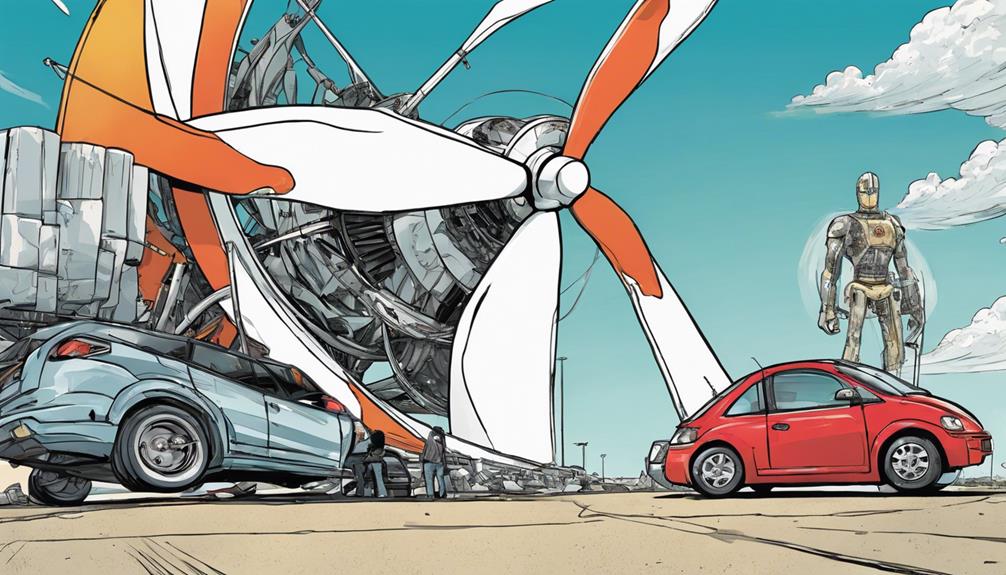
Transporting large wind turbine towers poses significant logistical challenges due to their diameters exceeding standard bridge and overpass clearance limits.
These towers aren't designed to be easily folded or bent, complicating the transportation process.
To address this issue, research is being conducted to create more slender and flexible turbine blades that can navigate road curves more effectively.
Companies such as Keystone Power Systems and GE Renewables are at the forefront of developing innovative solutions to overcome transportation challenges within the wind industry.
One approach being explored is the on-site construction of tall turbine towers, eliminating the need to transport them long distances and circumventing the issues associated with their size.
Blade Installation Difficulties

Tackling the challenges of turbine blade installation involves overcoming significant hurdles due to their immense size and rigidity. The sheer length of turbine blades, exceeding 100 meters (~328 feet), poses transportation and installation difficulties.
Here are three major obstacles faced during blade installation:
- Specialized Handling Equipment: Traditional turbine blades are inflexible and can't bend, necessitating the use of specialized equipment for safe and efficient handling during installation.
- Transportation Constraints: The large size of turbine blades restricts transportation options, requiring specific routes to be planned and obstacles like bridges and power lines to be avoided, increasing logistical complexity.
- Installation Complexity: Installing rigid turbine blades onto wind turbines is a challenging task that demands precision and expertise due to the size and weight of the blades, making the process intricate and time-consuming.
Innovations in Blade Design
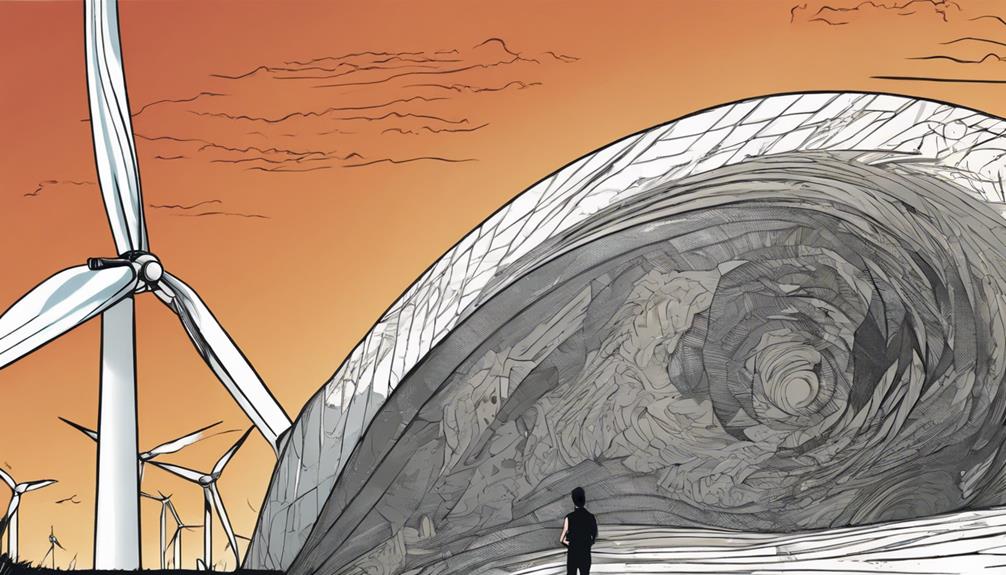
Innovations in blade design for wind turbines have revolutionized the industry by introducing slender and flexible alternatives to traditional rigid blades. These advancements aim to address the challenges of transporting and installing large wind turbine blades.
Companies such as Keystone Power Systems and GE Renewables are leading the way in developing these new technologies. The development of flexible blades allows for easier navigation around road curves during transportation, overcoming previous logistical hurdles.
Research conducted by the Department of Energy (DOE) focuses on creating blades that can be transported more efficiently, thereby overcoming size limitations that rigid blades present. These advancements not only improve the transportation and installation processes but also enhance the overall efficiency of wind turbines in harnessing wind energy.
With these innovations, the wind energy industry is moving towards more agile and effective turbine designs that can better utilize the power of the wind.
On-Site Tower Production
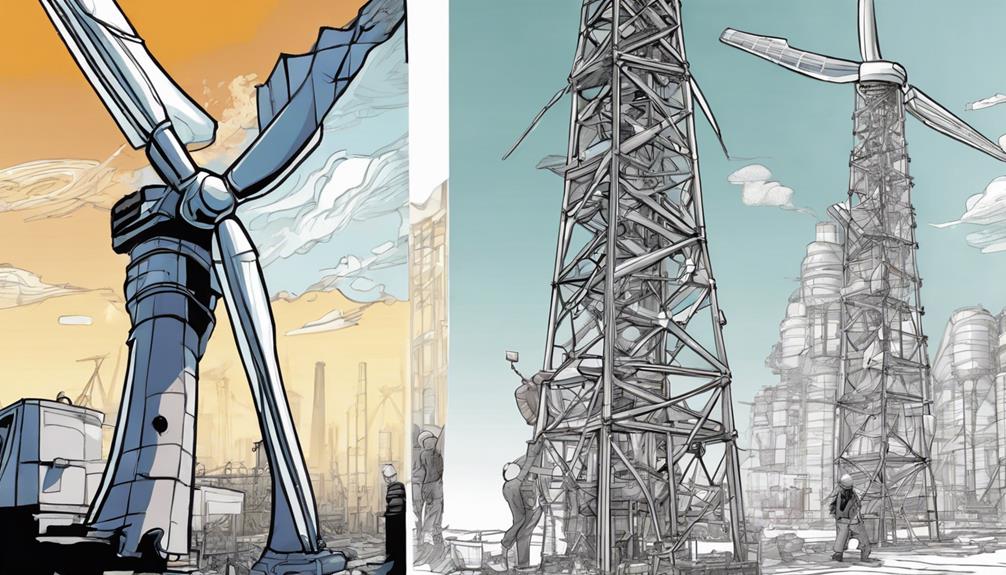
Assembling wind turbine towers directly at the installation site streamlines the process and reduces logistical complexities. This approach eliminates the need to transport complete turbine towers, cutting down on costs and potential transportation challenges.
Companies like Keystone Power Systems are actively exploring on-site tower production to simplify wind turbine installation processes. Here are three key advantages of on-site tower production:
- Cost Efficiency: By avoiding the transportation of complete turbine towers, on-site production reduces logistical costs associated with moving large and heavy tower components to remote or challenging locations.
- Increased Feasibility: On-site tower production makes it more feasible to install tall turbine towers that may face transportation constraints due to their size and weight, enhancing the viability of wind energy projects in various settings.
- Efficiency Boost: Implementing on-site tower production enhances the efficiency of wind energy projects, particularly in remote areas, by streamlining the installation process and reducing overall project timelines.
Wind Energy Resources
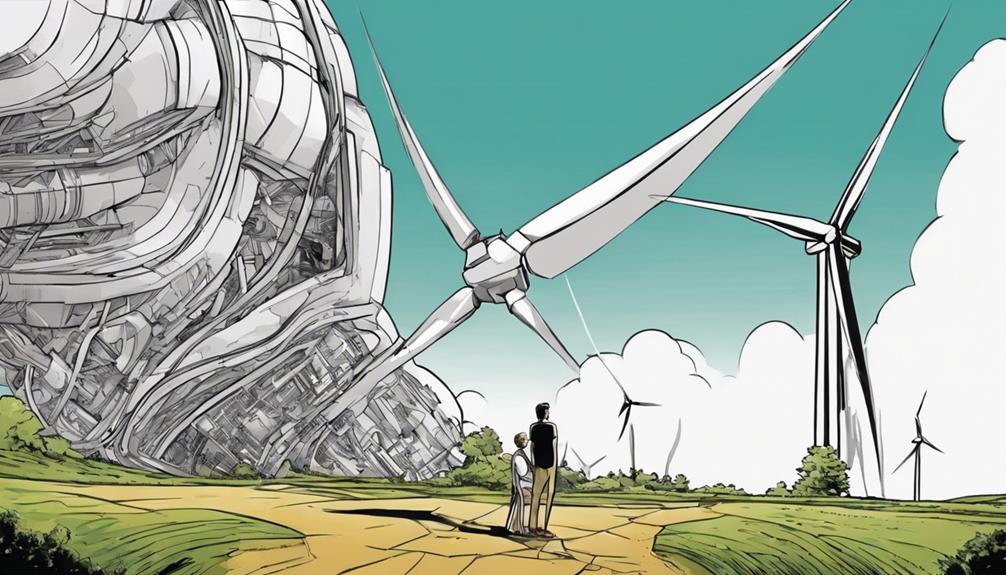
Wind energy resources, including the size and height of turbine components, play an essential role in maximizing electricity production and efficiency in the renewable energy sector. The table below highlights key facts about wind energy resources in the U.S., showcasing the growth in turbine size and capacity over the years.
| Aspect | Statistics | Impact |
|---|---|---|
| Rotor Diameter | Over 130 meters for newly-installed turbines | Captures more wind, increases electricity production |
| Hub Height | About 98 meters in 2022 for land-based turbines | Accesses higher wind speeds, enhances energy production |
| Offshore Turbine Height | Projected to reach about 150 meters by 2035 | Enhances energy capture potential, supports offshore wind development |
| Tower Height in Wind Shear Areas | Taller than 100 meters in Midwest and Northeast | Maximizes energy production by leveraging higher wind shear regions |
| Turbine Capacity | 3.2 MW average capacity for new turbines in 2022 | Demonstrates industry growth in power generation capabilities |
Frequently Asked Questions
How Much Power Does a Wind Turbine Have Compared to Its Diameter?
A wind turbine's power is closely tied to its rotor diameter. Larger diameters capture more wind, boosting electricity generation. Modern turbines with over 130m diameters produce significant power, averaging 3.2 megawatts in 2022.
How Much Power Does a Windmill Produce Vs Wind Speed?
Do you wonder how much power a windmill generates compared to wind speed? Wind turbines produce power directly proportional to the cube of wind speed, with doubling the wind speed increasing power output by a factor of eight.
How Is Wind Power Compared to Other Energy Sources?
Wind power offers abundant, clean energy potential, exceeding current global needs tenfold. It boasts cost-effectiveness, versatility in various settings, and emits no pollutants during operation. Its growth signifies a promising future in sustainable electricity generation.
What Is the Power From an Average Wind Speed of 8 Mph and 10 Mph?
At 8 mph, a wind turbine generates about 37 watts per square meter, but at 10 mph, it jumps to around 88 watts per square meter. The power output increases noticeably with wind speed, highlighting the efficiency of wind energy.
How Does the Power of Solar Energy Compare to the Power of Wind Turbines?
When comparing the solar vs electric power difference, both solar energy and wind turbines have their own strengths. Solar energy is more reliable in areas with consistent sunlight, while wind turbines are better in areas with strong, consistent wind patterns. It ultimately depends on the specific location and energy needs.
Conclusion
So, next time you see a wind turbine spinning majestically in the distance, just remember – that towering structure could easily overpower you in a game of strength and size. It's a humbling thought, isn't it?
But hey, at least they're helping to power the world in a clean and sustainable way. So let's give a round of applause to these giant machines, and maybe watch out for any rogue gusts of wind while we're at it.
Cheers to wind power!
